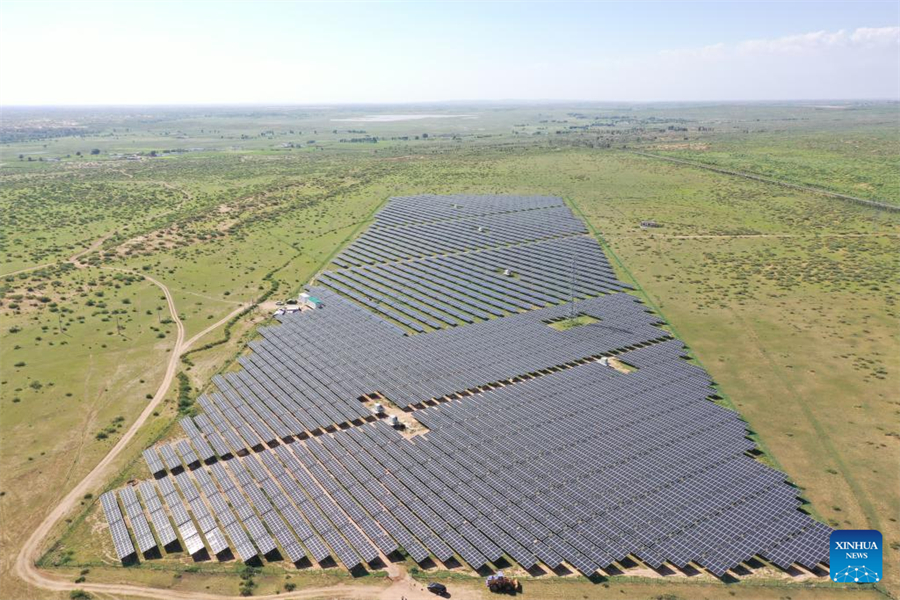Harnessing wind and solar power for toasty homes in north China

This aerial photo taken in August, 2023 shows a photovoltaic power station in Uxin Banner of Ordos City, north China's Inner Mongolia Autonomous Region. [Xinhua]
HOHHOT -- Amidst a cold wave sweeping through north China, Li Chengqin, a resident of the Inner Mongolia Autonomous Region, found herself comfortably sipping tea and watching TV in her cozy living room.
A notable change this year is she no longer needs to frequently feed her stove with coal. Her new stove is powered by electricity generated from wind energy, which is not only efficient but also environmentally friendly.
"A simple press of this button can warm up the entire room in just 10 minutes," said Li, whose house is located in Jarud Banner of Tongliao City.
In her kitchen, a cubic iron box replaced the traditional coal stove and served as a heater. Once switched on, it can elevate the room temperature by three to five degrees Celsius within 10 minutes. "Despite the wind and snow outside, our room maintains a temperature of 24.5 degrees Celsius. And there are no longer ashes and the stifling smell of burning coal," Li said.
In Inner Mongolia, approximately 31.8 percent of the total population consists of farmers and herders like Li. Since their homes were not connected to the central heating system, they had to primarily rely on coal-fired heaters. To reduce air pollution, the region earmarked 160 million yuan (about 22.4 million U.S. dollars) last year to boost the use of clean energy, and aimed to continue doing so each year.
In recent years, the autonomous region has accelerated its transformation from a fossil energy base to a clean energy base. Its wind power generation has recorded an average annual growth rate of 15.6 percent over the past five years, 8.1 percentage points higher than that of all power generation.
While wind power has been harnessed in Jarud Banner, solar power is transforming lives in the Uxin Banner of Ordos City. The heating supply in herdsman Aotgan Bayar's home in Ordos is now powered by electricity generated from a photovoltaic power station set up last year.
"In the past, we needed as much as five tonnes of coal each winter, and the room was full of smoke," he said. "Now we are spending less on heating and it is more environmentally friendly."
At present, about 58,420 households in Ordos are using clean energy for winter heating, while in the city more than 78 percent of the heating systems are powered by clean energy.
In Aotgan Bayar's village alone, with 239 households shifting to clean energy, a total of 2,716 tonnes of pollutants like soot and dust, sulfur dioxide, and carbon dioxide could be reduced in a winter heating season.
More and more people in Inner Mongolia are now bidding farewell to coal-fired stoves, thanks to the flourishing clean energy industry that leverages the region's natural advantages, including abundant wind and solar power resources.
In 2022, Inner Mongolia increased its installed capacity of new energy by 20 million kilowatts. Its gross new energy power generation topped 130 billion kilowatt-hours (kWh), more than the yearly output of the Three Gorges Hydroelectric Power Station, according to official data.
On Nov. 16, a project was put into operation in Inner Mongolia's capital Hohhot, utilizing hot water discharged from power plants for heating systems. The project is expected to save as much as 1.13 million tonnes of coal or over 675 million cubic meters of natural gas annually.
"In the long run, clean energy has the potential to not only lower heating costs but also provide residents with both warmth and a clean environment," said Yu Li, vice general manager of a local heating supply company, adding that they will strive to bring "green heat" to more families.
























